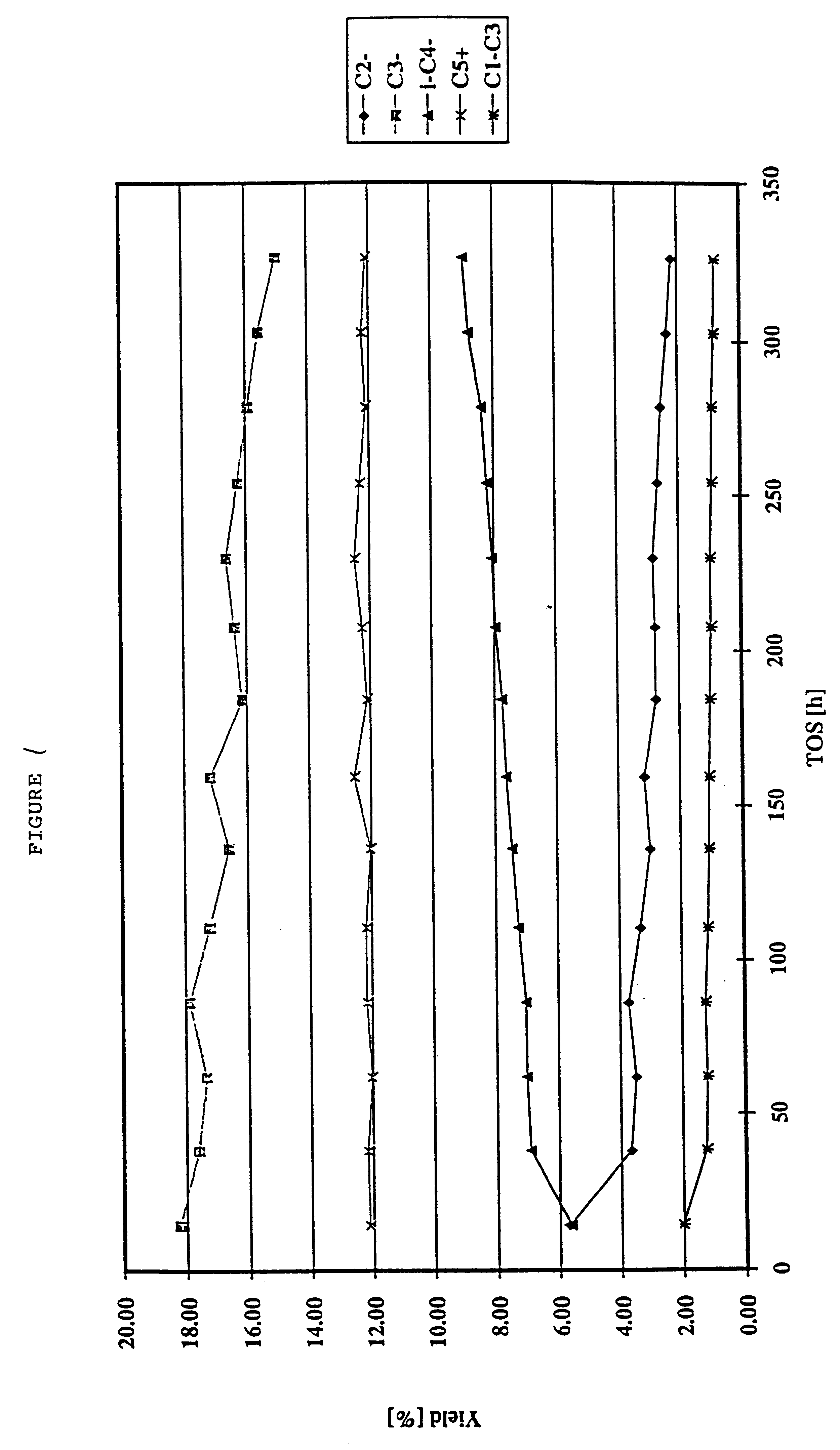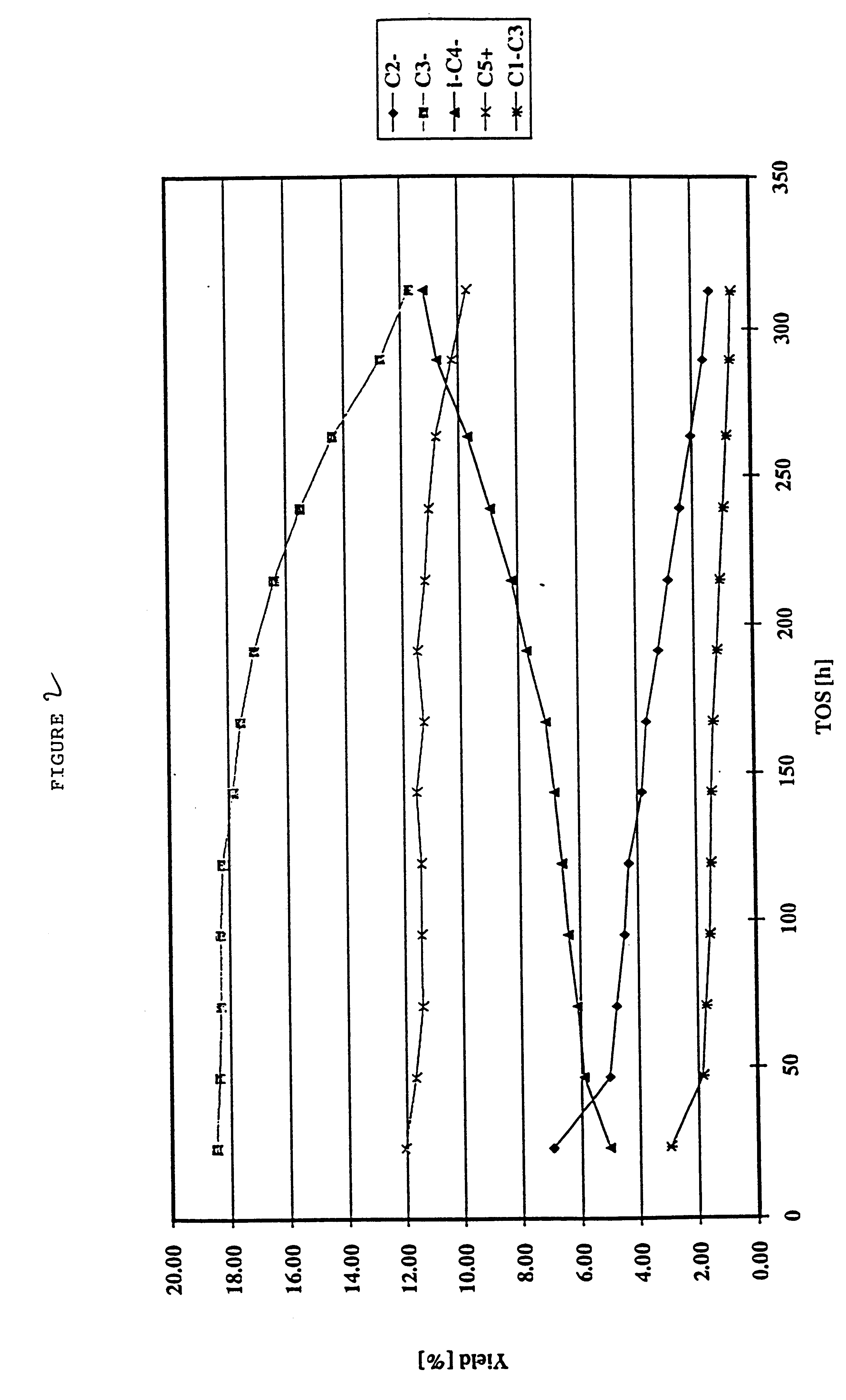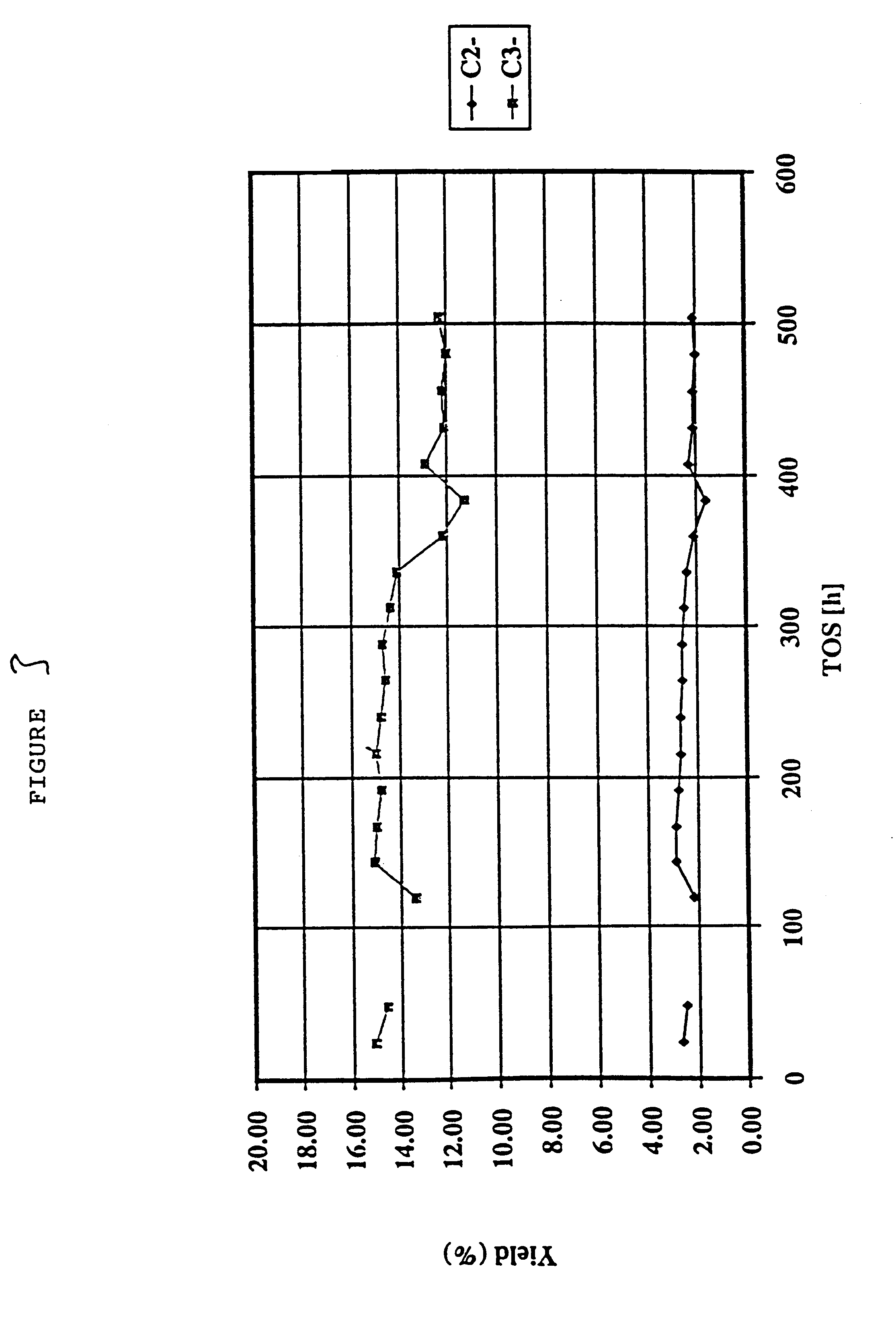Production of olefins
a technology of olefins and olefins, which is applied in the field of olefin production, can solve the problems of low yield, unstable conversion against time, and low stability of crystalline silicate catalysts
- Summary
- Abstract
- Description
- Claims
- Application Information
AI Technical Summary
Benefits of technology
Problems solved by technology
Method used
Image
Examples
example 2
Example 1 was repeated but using a different feedstock comprising, rather than a light cracked naphtha, a fractionated C.sub.5 cut from a light cracked naphtha. In addition, in the catalytic cracking process the inlet temperature was 548.degree. C. The hydrocarbon outlet pressure was around 1 bar (i.e. atmospheric pressure).
Table 4 shows the distribution of the hydrocarbon species in the feed of the C.sub.5 cut from the LCN, in the hydrotreated feed which had been subjected to a diene hydrogenation process as in Example 1, and in the effluent after the cracking process. It may be seen that the feed substantially initially comprises C.sub.5 species and that following the catalytic cracking process, the olefin content has remained substantially the same but the amount of C.sub.5 species in the effluent is significantly decreased as compared to the amount of such species in the initial feedstock. Again, the C.sub.2 to C.sub.4 lighter olefins may readily be fractionated from the effluen...
example 3
Example 1 was repeated but using as the feedstock, instead of a light cracked naphtha, a C.sub.4 raffinate (raffinate II) from an MTBE unit in a refinery. In addition, the inlet temperature of the feedstock was around 560.degree. C. The hydrocarbon outlet pressure was around 1 bar (atmospheric pressure).
It may be seen from Tables 7 to 9 that C.sub.2 and primarily C.sub.3 olefins are produced from the C.sub.4 olefinic feedstock in accordance with the invention. In the effluent, around 34.5% of the olefin content is present as C.sub.2 and / or C.sub.3 olefins. The C.sub.2 and / or C.sub.3 olefins may be readily be fractionated from the effluent. The propylene yield on an olefin basis was 29%.
example 4
This example illustrates the catalytic cracking of an olefin feedstock comprising 1-hexene over silicalite which has been subjected to a steaming and de-alumination process and calcination, with the catalytic cracking process being performed at a variety of inlet temperatures for the feed into the reactor tube.
The silicalite catalyst comprised a silicalite having a silicon / aluminum ratio of around 120, and having a crystallite size of from 4 to 6 microns and a surface area (BET) of 399 m.sup.2 / g. The silicalite was pressed, washed and the 35-45 mesh fraction was retained. The silicalite was subjected to a steaming process in an atmosphere of 72 vol % stream and 28 vol % nitrogen at a temperature of 550.degree. C. at atmospheric pressure for a period of 48 hours. Then 11 g of the steamed silicalite was treated with an EDTA solution (100 ml containing 0.0225M of Na.sub.2 EDTA) thereby to de-aluminate the silicalite under reflux for a period of 6 hours. The slurry was then washed thor...
PUM
 Login to View More
Login to View More Abstract
Description
Claims
Application Information
 Login to View More
Login to View More - Generate Ideas
- Intellectual Property
- Life Sciences
- Materials
- Tech Scout
- Unparalleled Data Quality
- Higher Quality Content
- 60% Fewer Hallucinations
Browse by: Latest US Patents, China's latest patents, Technical Efficacy Thesaurus, Application Domain, Technology Topic, Popular Technical Reports.
© 2025 PatSnap. All rights reserved.Legal|Privacy policy|Modern Slavery Act Transparency Statement|Sitemap|About US| Contact US: help@patsnap.com



